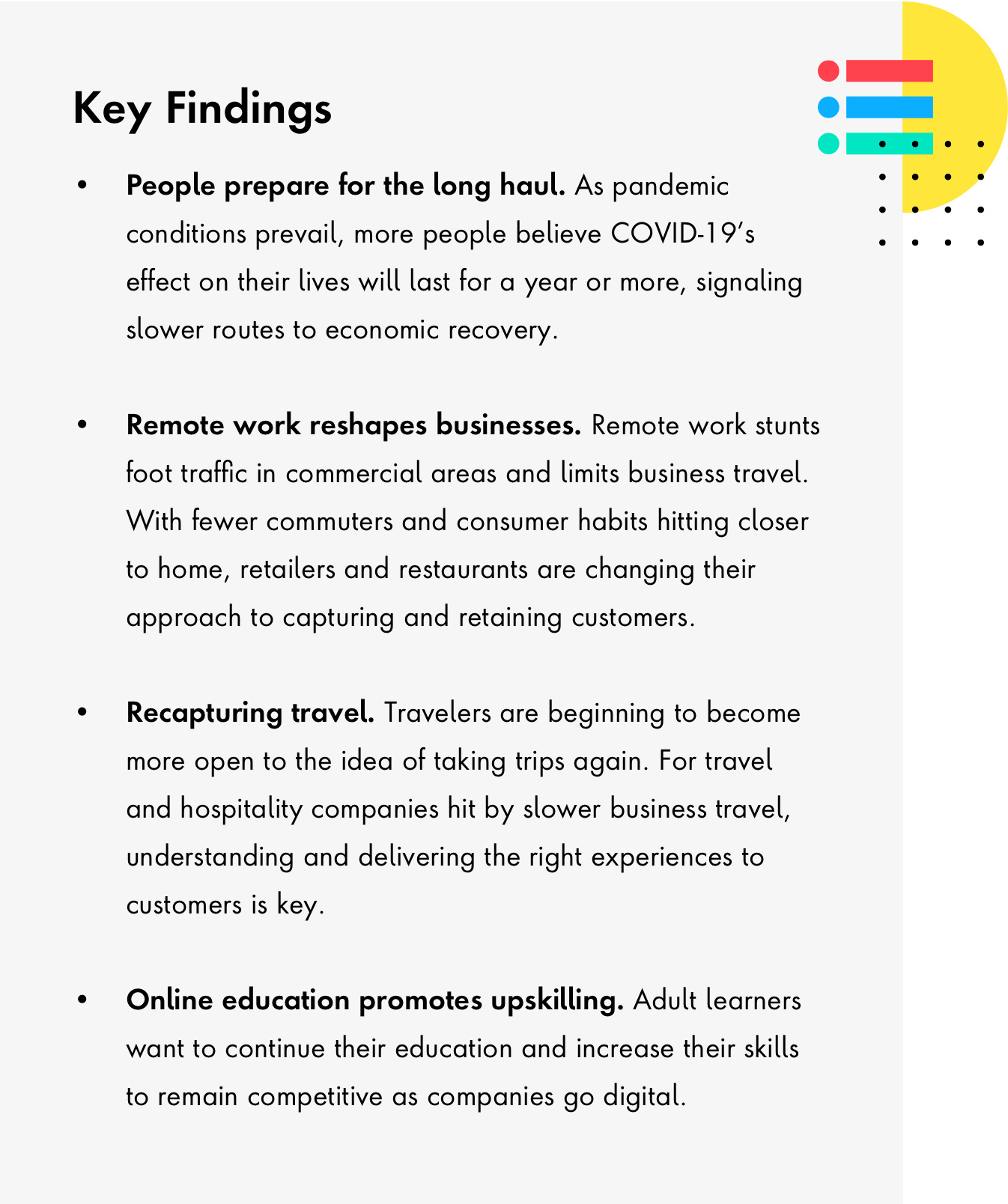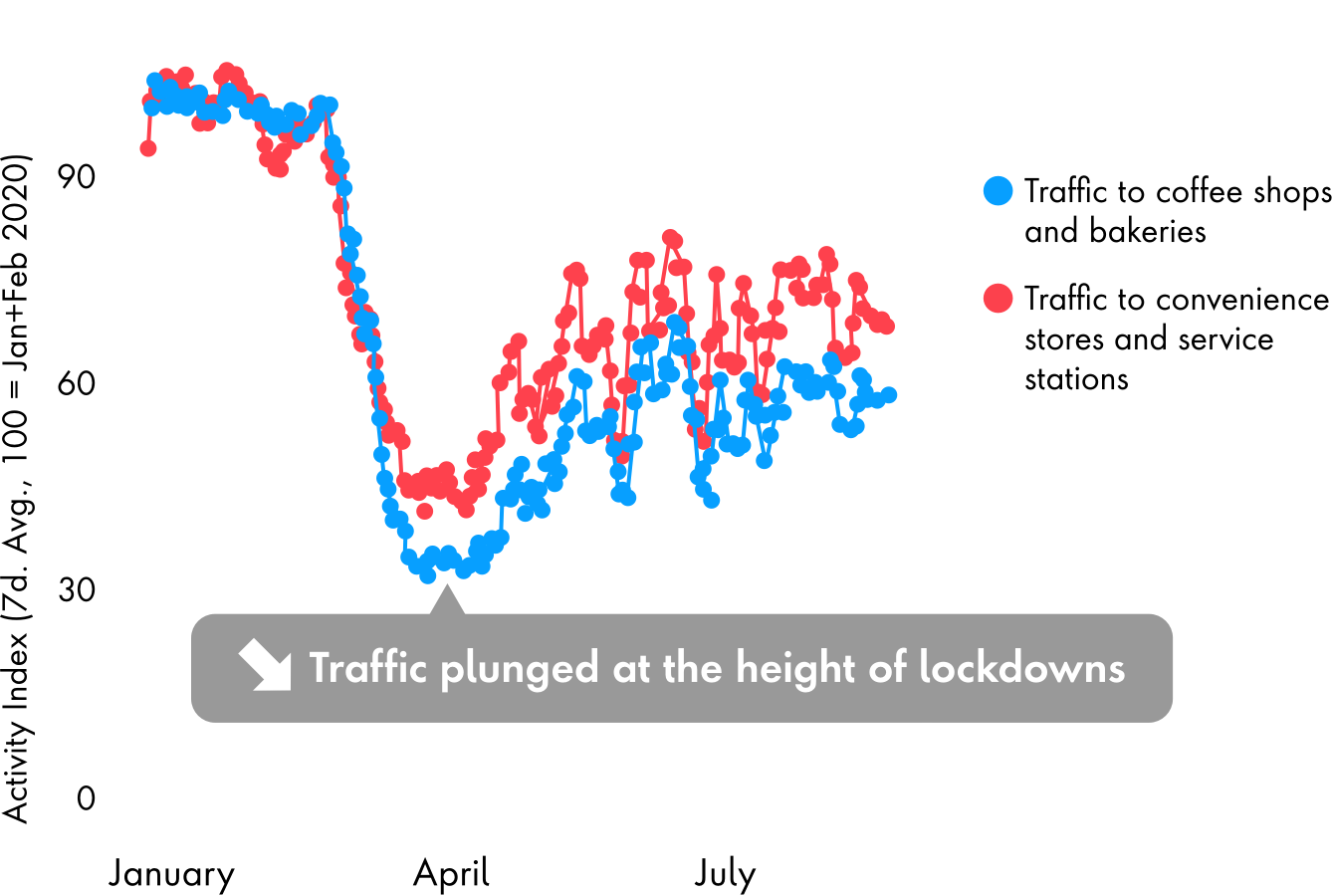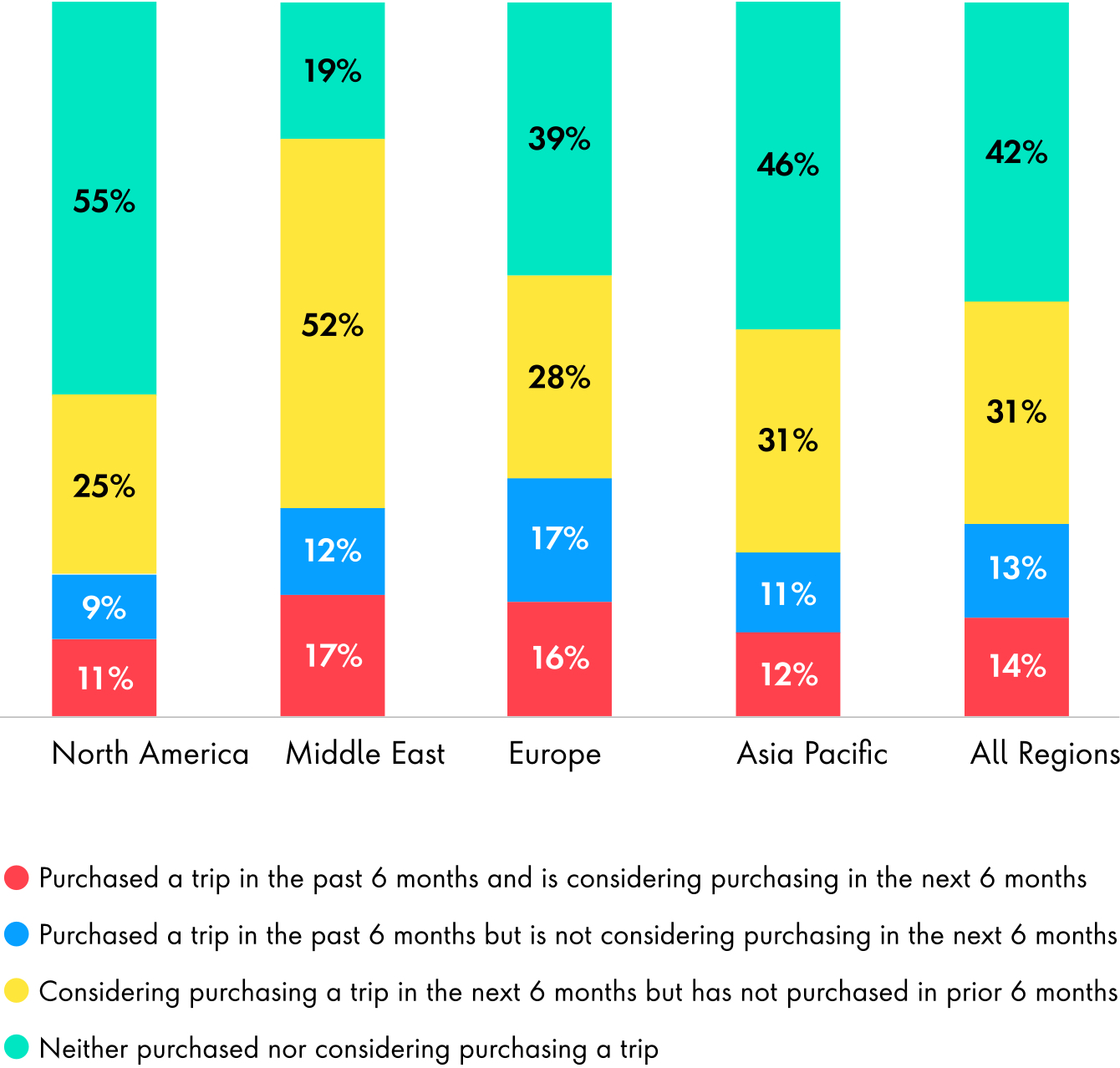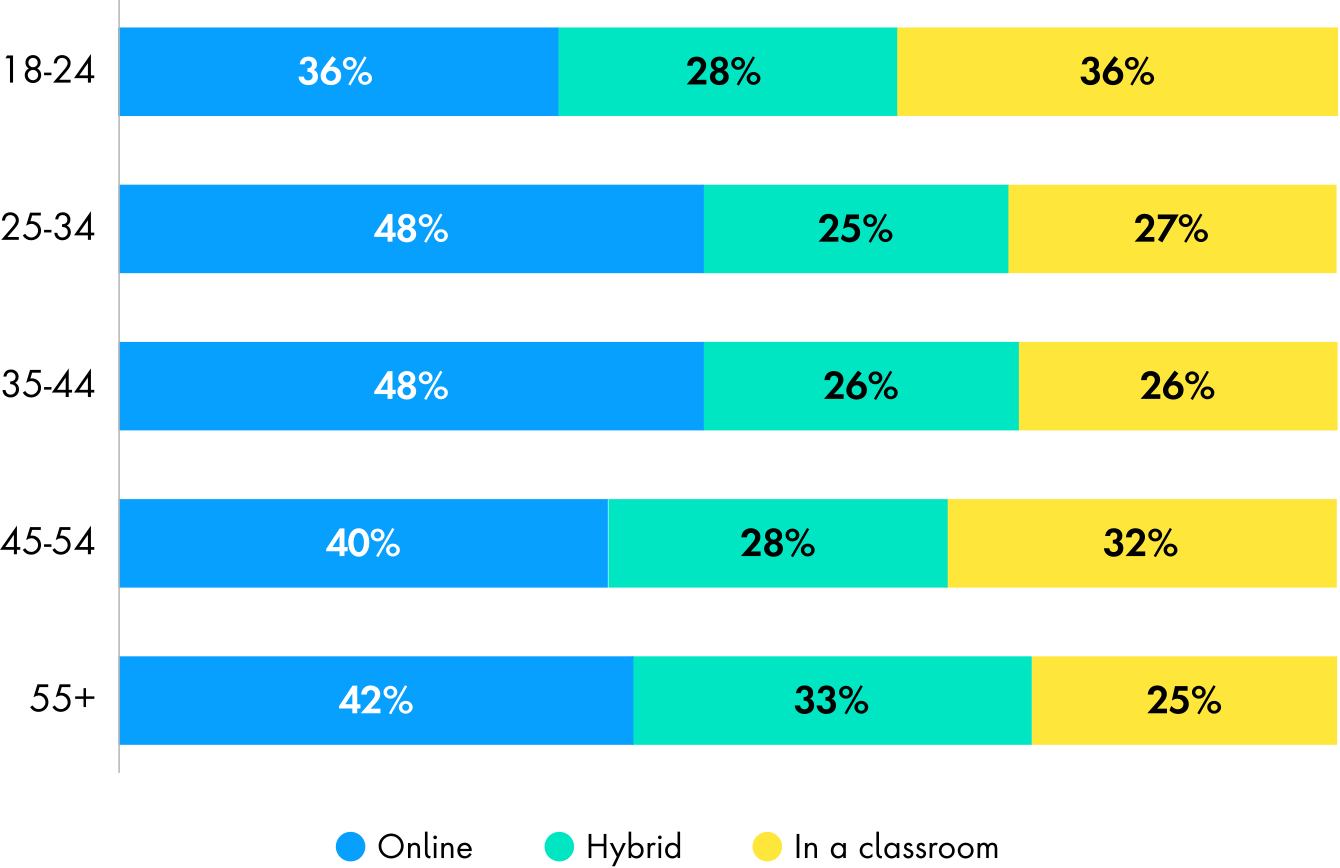Everything about this year has been unexpected. As 2021 dawns, events that have altered everyday life and the ways people have learned to adapt are becoming long-term routines.
According to data from GlobalWebIndex (GWI), global perception of COVID-19’s duration has shifted amid uncertainty. As of July 2020, 72 percent of people globally say the outbreak will last for at least a year since the outbreak began, up from the 11 percent who said the same thing in March.
With the road to recovery anticipated to last well into next year, people are learning to balance benefits of reopening with digital habits formed over the last several months. This hybrid world incubated by extended life at home merges online and offline activity, with businesses across industries trying to navigate the socioeconomic effect these changes could bring.

















